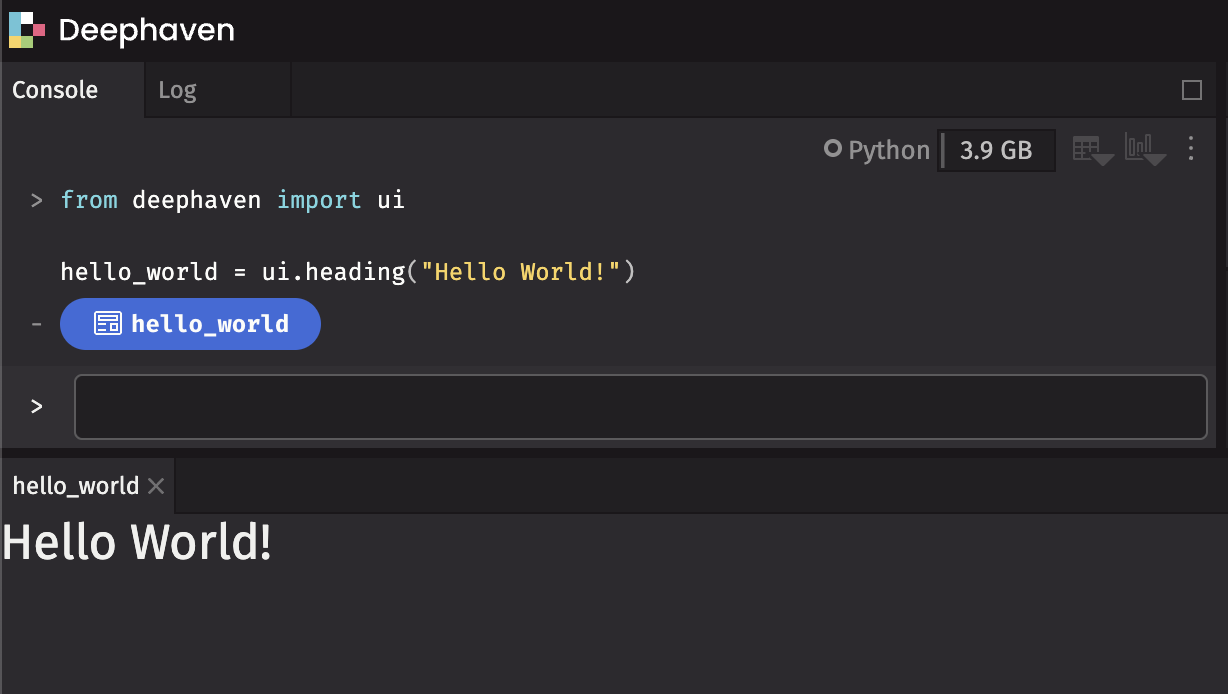Installation
deephaven.ui is a plugin that works with Deephaven. Use the deephaven.ui plugin to build dynamic components and layouts using Deephaven.
Enterprise
Enterprise installations come packaged with deephaven.ui and therefore don’t require additional steps. The rest of the document pertains to Core installations.
New installation
If you don’t already have Deephaven installed, you can install via Docker or pip.
Install and run with Docker
deephaven.ui can be run from pre-built Docker images. The image you use will depend on your version of Deephaven:
# For Deephaven < 0.37.0
docker run --name deephaven -p 10000:10000 ghcr.io/deephaven/server-ui:latest
# For Deephaven >= 0.37.0
docker run --name deephaven -p 10000:10000 ghcr.io/deephaven/server:latest
See the Deephaven Docker install documentation for more information.
Install and run with pip
deephaven.ui can easily be installed using the Python package manager pip. Simply run:
pip install deephaven-server deephaven-plugin-ui
Then you can run the Deephaven server with:
deephaven server
See the Deephaven pip install documentation for more information.
Existing installation
Installing Deephaven plugins is different whether you have Deephaven installed via Docker or via pip.
Add to existing Docker install
With a running Docker container named deephaven, run the following from the command line:
docker exec deephaven pip install deephaven-plugin-ui
See the documentation for installing packages in a running container for more details.
Add to existing pip installation
With an existing pip installation of Deephaven server, just pip install the plugin:
pip install deephaven-plugin-ui
See the documentation for using Python packages in Deephaven for more details.
Verifying installation
After you have deephaven.ui installed, verify it is working correctly. Run Deephaven, and in the console enter the following command:
from deephaven import ui
hello_world = ui.heading("Hello World!")
A panel will appear that displays the “Hello world!” text:
